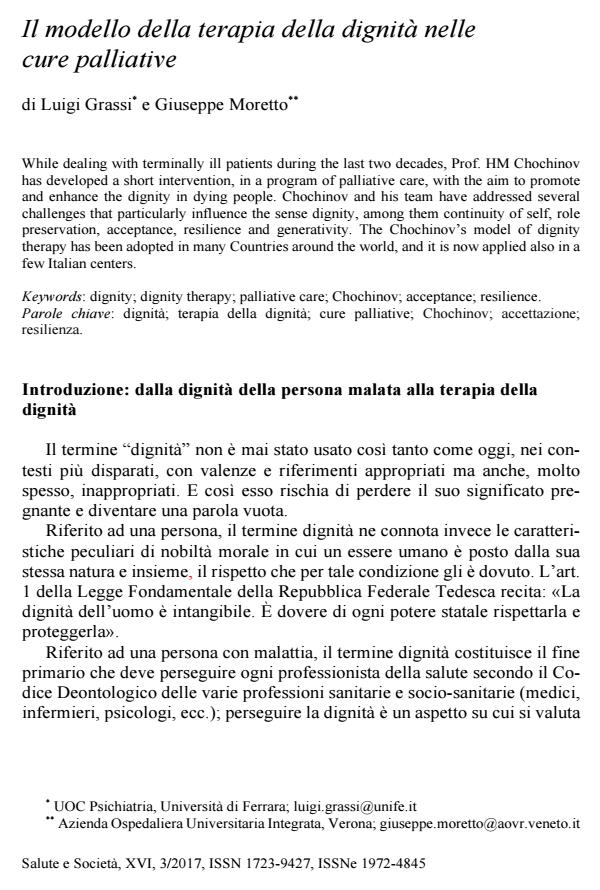Il modello della terapia della dignità nelle cure palliative
Journal title SALUTE E SOCIETÀ
Author/s Luigi Grassi, Giuseppe Moretto
Publishing Year 2017 Issue 2017/3
Language Italian Pages 10 P. 94-103 File size 104 KB
DOI 10.3280/SES2017-003008
DOI is like a bar code for intellectual property: to have more infomation
click here
Below, you can see the article first page
If you want to buy this article in PDF format, you can do it, following the instructions to buy download credits

FrancoAngeli is member of Publishers International Linking Association, Inc (PILA), a not-for-profit association which run the CrossRef service enabling links to and from online scholarly content.
While dealing with terminally ill patients during the last two decades, Prof. HM Chochinov has developed a short intervention, in a program of palliative care, with the aim to promote and enhance the dignity in dying people. Chochinov and his team have addressed several challenges that particularly influence the sense dignity, among them continuity of self, role preservation, acceptance, resilience and generativity. The Chochinov’s model of dignity therapy has been adopted in many Countries around the world, and it is now applied also in a few Italian centers.
Keywords: Dignity; dignity therapy; palliative care; Chochinov; acceptance; resilience.
Luigi Grassi, Giuseppe Moretto, Il modello della terapia della dignità nelle cure palliative in "SALUTE E SOCIETÀ" 3/2017, pp 94-103, DOI: 10.3280/SES2017-003008